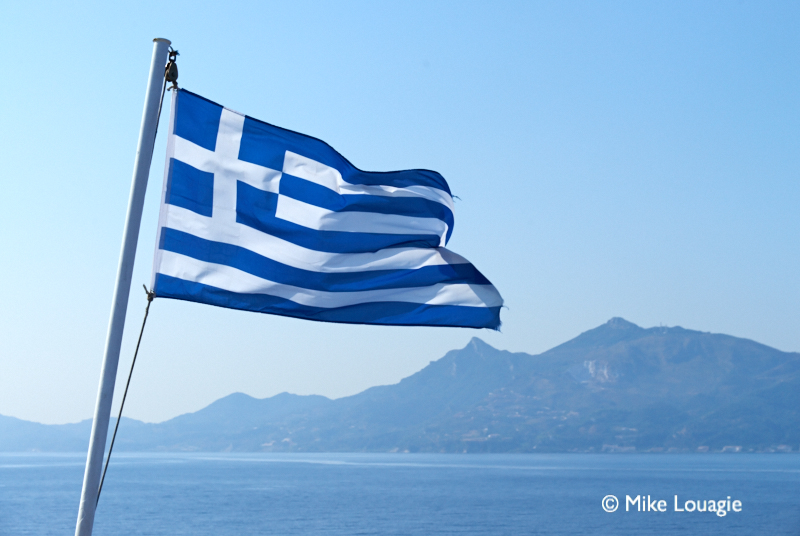According to the latest XRTC survey about the Hellenic Coastal Lines, the “transformation” of the Greek Ferry Scene is still in progress, since the period when the country entered the economic recession. This development is illustrated through a series of findings such as:
- The introduction of new “players” within the Greek Ferry Scene which present a dynamic growth in their fleet as well as new investments (SeaJets, Golden Star Ferries, Fast Ferries etc).
- Drastic fleet reduction -by 50%- of the ferry operators listed in the Stock Exchange.
- New mergers and acquisitions which promote a more concentrated model within the Greek Ferry Scene.
- The bankruptcy of traditional “players” as a result of the bad management, wrong strategies and incorrect business plans (SAOS, NEL, Agoudimos Lines etc.).

The 18th annual survey of the XRTC summarizes the overall picture of the Greek Ferry Scene in 21 points:
1. The ATTICA Group successful bond issue, held in July 2019, is the most important and promising event that took place within the Greek Ferry market in recent years. The offering of collateral for the purpose of issuing a low interest rate for the company occurs for the first time in a public traded bond.
2. Since the acquisition of the Hellenic Seaways, ATTICA Group has become the largest Ferry Operator in Greece, handling 31% of both tonnage and passenger demand.
3. The listed in the Stock Exchange ferry operators for 2018 are ANEK Lines, ATTICA Group and Minoan Lines. The latter left on April 23, 2019.
4. Despite the financial crisis, ferry traffic has increased by 5% for the third consecutive year.
5. According to the Hellenic Federation of Passenger Ferries’ data, ships serving the Hellenic Coastal Lines are 91 with an average age of 26 years old.
6. The number of vessels that belong to the listed in the Stock Exchange ferry operators are 41 with an average age of 19 years old.
7. Greece’s touristic product continues to grow. However, ferry services do not benefit from that in comparison with the airlines. The largest percentage of incoming tourists arrives in the largest islands mainly by air.
8. However, the increase in tourism has a positive impact on ferry services, as freight transportation to the islands is mainly done by ferries.
9. Ferry services benefit from the increase in the inter-island trips as well as inland tourism.
10. According to the Hellenic Statistical Service (ELSTAT) the increase in ferry traffic -by 5% in 2018- is not reflected in the outcome of the listed in the Stock Exchange ferry operators. This increase was mainly attributed to the rest of the ferry companies whose presence is constantly increasing at both fleet and traffic levels.
11. The ferry traffic among the listed in the Stock Exchange ferry operators in both Greece and the Adriatic Sea was reduced, with the exception of a marginal increase on the truck freight in the Adriatic Sea.
12. Over the last 10 years (2009-2019) the reduction of the ferry traffic of listed ferry operators is 46% while the tonnage supply has decreased by 44% over the same period.
13. The rise in the oil prices has affected negatively the financial results of the listed ferry operators. In 2017 the oil prices increased by 29% while in 2018 the average increase was 25%. Thus, operating results have increased -over the last 2 years- about 100 million Euros.
14. The most important issues the Greek ferry market mainly faces today are the burden on the price of fuel; the obligation to comply with the IMO’s new stricter regulations for the use of 0.5% low sulphur marine fuel from January 1, 2020; the rising need -of the listed ferry operators- to renew their fleet over the next 10 years as most of them will soon reach the age of 40 years old; the high VAT (24%) on ferry tickets. Greek Ferry Operators demand the steady VAT reduction to 6% in order to be harmonised at the European Level.
15. The above issues create strong pressure on the Greek Ferry Operators which warn the state that they are going to proceed in further increase in the ticket prices, which are already expensive for the average Greek consumer.
16. The gradual renewal of the Greek ferry fleet is also a big bet for the Greek ferry operators. They must find soon -through the Commission- the appropriate funding tools. These funds are currently limited to only partially subsidizing new “green” technologies installed on ships. So, funding ferry companies should be government’s top priority.
17. The liberalization of ferry services since 2002 has contributed to the entry of new “players” in the ferry sector. Today, introducing a ferry in a line requires no approval and no procedure. The route is just announced by the Ferry Operator and the Ministry of Mercantile Marine.
18. New “players” who decided to invest in the ferry market succeeded in earning the largest share of the ferry market by taking advantage of the need of the listed Ferry Operators to reduce their fleet.
19. The new Ferry Operators in Greece strengthen their position by increasing their fleet. Since they do not have the obligation to publish their financial data, their financial analysis cannot be done, and this may prevent the market regulator from quickly taking constructive action for the companies themselves in the event of an emergency.
20. The largest competitor in the ferry market remains airlines which has been booming in recent years, creating a market particularly competitive in high demand periods.
21. The need for port infrastructure development also remains high and can create potential investment opportunities in the sector.

